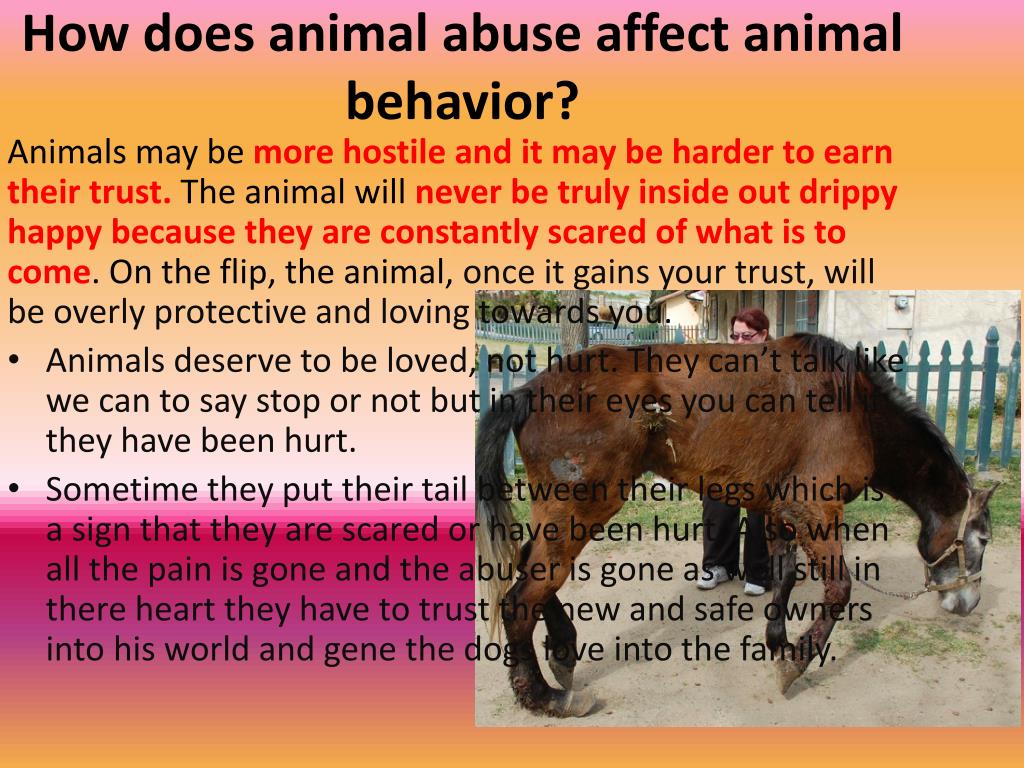The profound impact of animal abuse extends far beyond the immediate suffering inflicted upon the individual animals involved. This insidious phenomenon reverberates throughout communities, ecosystems, and even human societies at large. Understanding how animal abuse damages more than just the animal itself requires a thorough examination of various interconnected dynamics, including psychological ramifications, social implications, economic costs, and ecological consequences.
At the core of animal abuse is a critical psychological component. Studies indicate that individuals who engage in acts of cruelty towards animals often exhibit signs of emotional distress or sociopathy. This behavior can stem from a range of factors, including a history of trauma, exposure to violence, or a failure to develop empathy. As these individuals continue to harm animals, they may desensitize themselves to violence, leading to a cycle of aggression that can escalate to include human victims. Thus, the act of harming animals serves as a precursor to broader societal violence, implicating a direct correlation between animal cruelty and human crimes.
Beyond individual behaviors, the normalization of animal abuse within a community engenders a culture of violence. In neighborhoods where animal fighting rings or abuse cases are prevalent, the acceptance of such cruelty can instigate apathy towards suffering in general. Communities may become less responsive to interventions, leading to a degradation of social values. This culture can deter community cohesion, resulting in increased fear and mistrust among residents. Social bonding diminishes when empathy is eroded, creating a chasm of isolation and disconnection, which further perpetuates cycles of violence.
Economically, the ramifications of animal abuse are staggering. Nonprofit organizations and law enforcement agencies allocated to animal welfare can experience overwhelming financial burdens as they strive to combat and remediate instances of cruelty. For instance, local animal shelters and rescue organizations frequently find themselves stretched thin, responding to cases of neglect and abuse, yet lacking sufficient funding and resources to provide adequate care and rehabilitation for the animals rescued. The cost of veterinary care, food, and shelter adds up rapidly, draining both public and private resources that might otherwise be utilized for community enrichment or health initiatives.
Furthermore, the presence of animal cruelty can deter tourism and investment in affected regions. Areas marked by violence towards animals may be perceived as unsafe or lacking in moral integrity, impacting local economies reliant on hospitality and commerce. The ripple effect can lead to a decline in small businesses, exacerbating poverty and social inequities. Consequently, animal abuse not only undermines individual animals but also imperils the financial foundations of whole communities.
The ecological consequences of animal abuse cannot be understated either. Ecosystems rely on the health and wellbeing of all species, and the abuse or neglect of animals can disrupt natural balances. Take, for example, instances of illegal poaching or the abuse of wildlife—these acts can lead to the extinction of species and the destabilization of ecosystems. When apex predators or keystone species are removed from their habitats due to abuses, it can trigger a cascade of ecological failures that affect plant and animal life alike. This long-term detriment ultimately endangers biodiversity, which is essential for ecosystem resilience.
Additionally, irresponsible pet ownership and abandonment of animals can precipitate public health concerns. Stray and feral animal populations often suffer from increased rates of disease and malnutrition, creating potential health hazards for humans. Zoonotic diseases, which can transfer from animals to humans, proliferate in environments where animal welfare is neglected. Consequently, the impact of animal cruelty manifests not only as a moral or ethical issue but as a public health crisis that necessitates immediate attention and intervention.
In the arena of education, addressing animal abuse cultivates a foundation for empathy and ethical responsibility among youth. Schools and community organizations promoting humane education programs can instill a sense of stewardship for all living beings. As children learn to recognize the inherent value of animals and the consequences of cruelty, they can develop a deeper understanding of social justice, compassion, and the interconnectedness of life. This educational approach encourages the development of future generations who prioritize kindness and respect for all, thereby reinforcing societal norms against violence.
In conclusion, the ramifications of animal abuse transcend the immediate suffering encountered by animals themselves. The psychological, social, economic, and ecological impacts illustrate a complex web of consequences that resonate throughout human society and the environment. Addressing animal cruelty requires a multifaceted approach, encompassing community engagement, education, and systemic changes to policies governing animal welfare. In working together, society can foster an ethos of compassion that uplifts all living beings, navigating the path toward a more empathetic and harmonious existence.






